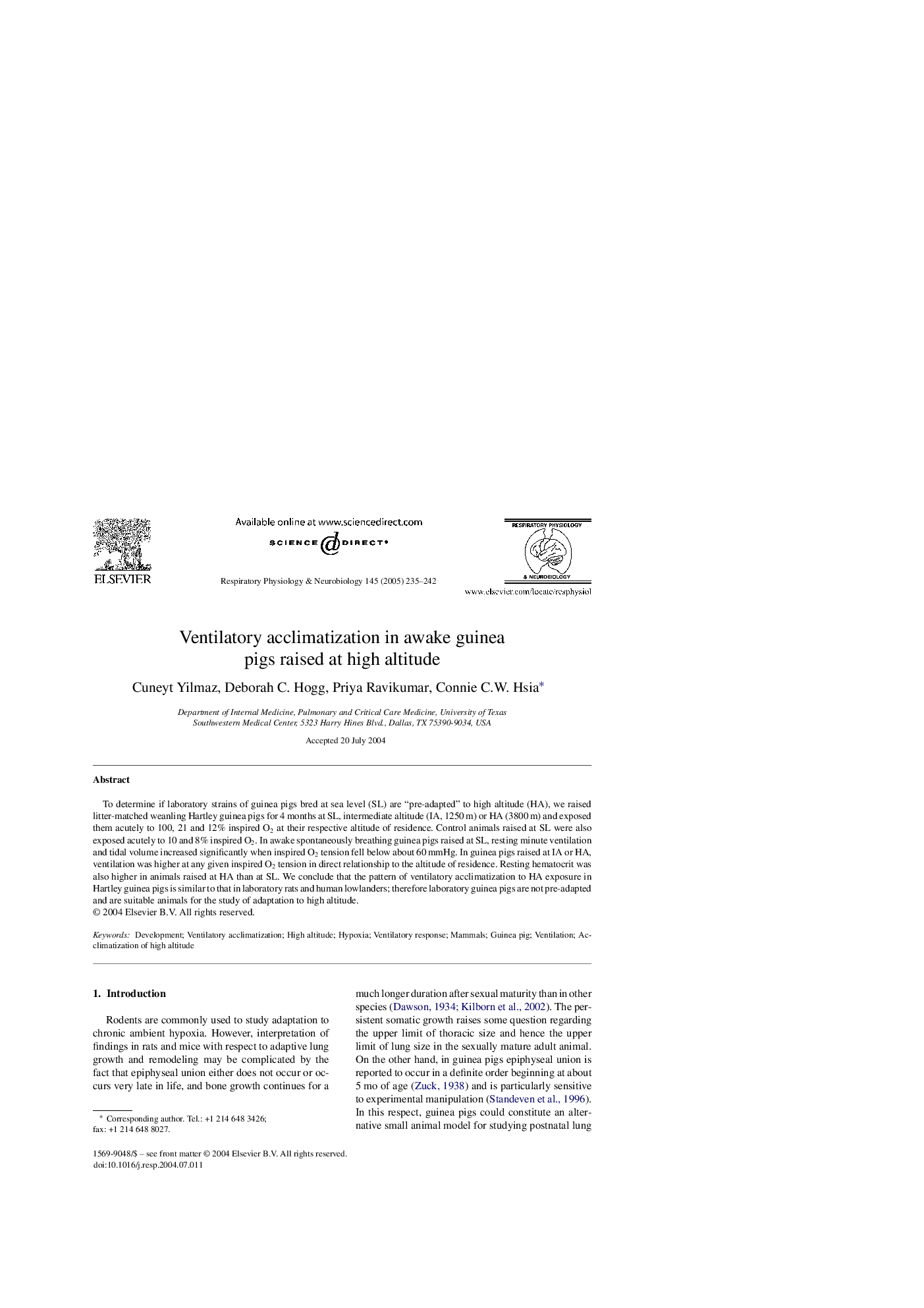| Article ID | Journal | Published Year | Pages | File Type |
|---|---|---|---|---|
| 9152270 | Respiratory Physiology & Neurobiology | 2005 | 8 Pages |
Abstract
To determine if laboratory strains of guinea pigs bred at sea level (SL) are “pre-adapted” to high altitude (HA), we raised litter-matched weanling Hartley guinea pigs for 4 months at SL, intermediate altitude (IA, 1250Â m) or HA (3800Â m) and exposed them acutely to 100, 21 and 12% inspired O2 at their respective altitude of residence. Control animals raised at SL were also exposed acutely to 10 and 8% inspired O2. In awake spontaneously breathing guinea pigs raised at SL, resting minute ventilation and tidal volume increased significantly when inspired O2 tension fell below about 60Â mmHg. In guinea pigs raised at IA or HA, ventilation was higher at any given inspired O2 tension in direct relationship to the altitude of residence. Resting hematocrit was also higher in animals raised at HA than at SL. We conclude that the pattern of ventilatory acclimatization to HA exposure in Hartley guinea pigs is similar to that in laboratory rats and human lowlanders; therefore laboratory guinea pigs are not pre-adapted and are suitable animals for the study of adaptation to high altitude.
Keywords
Related Topics
Life Sciences
Biochemistry, Genetics and Molecular Biology
Physiology
Authors
Cuneyt Yilmaz, Deborah C. Hogg, Priya Ravikumar, Connie C.W. Hsia,
